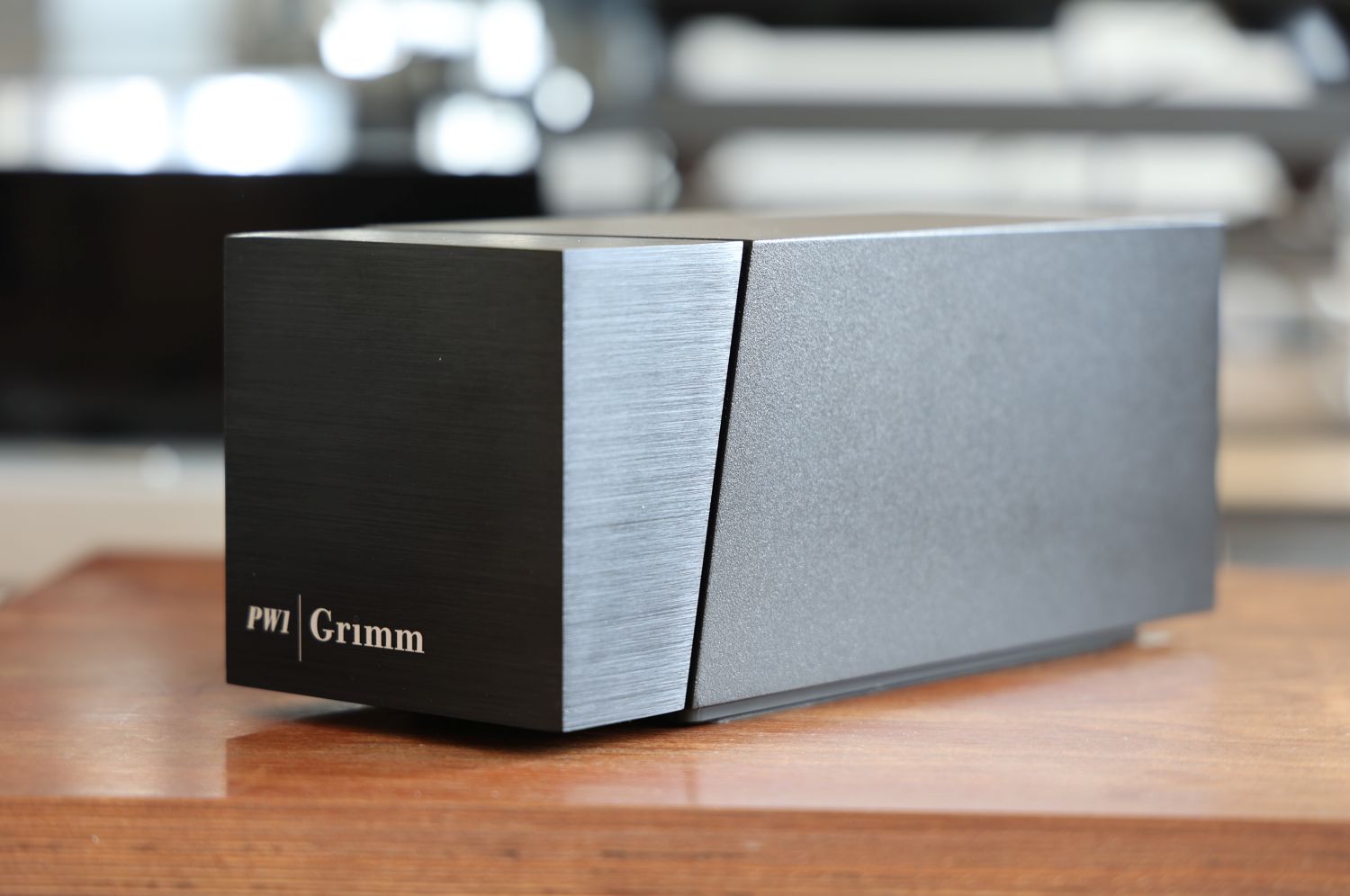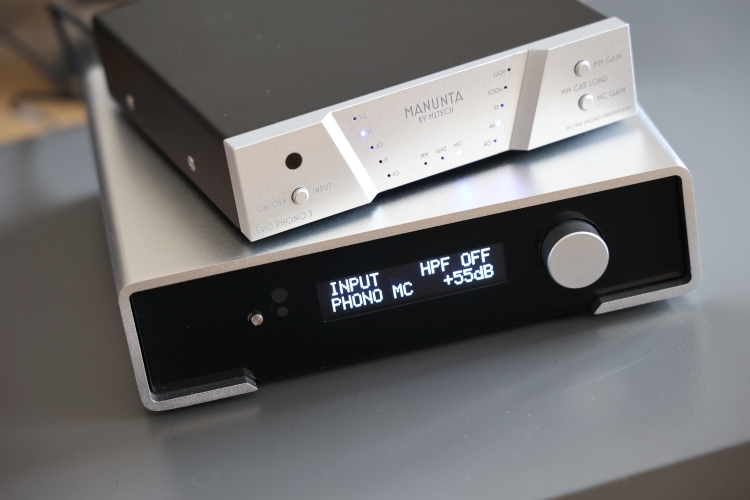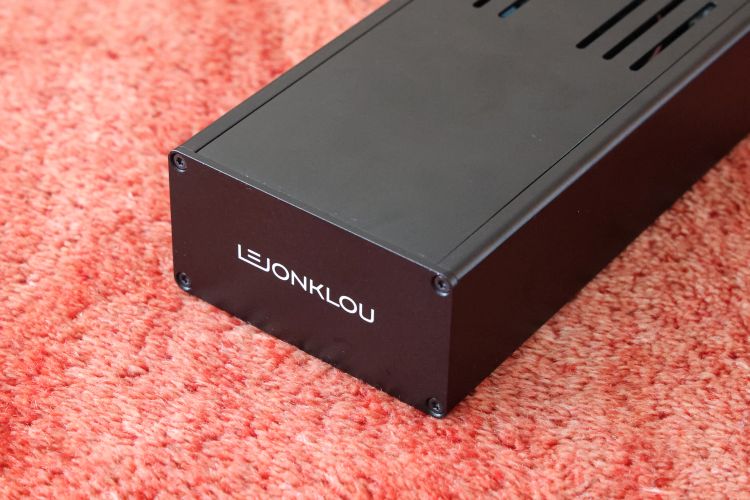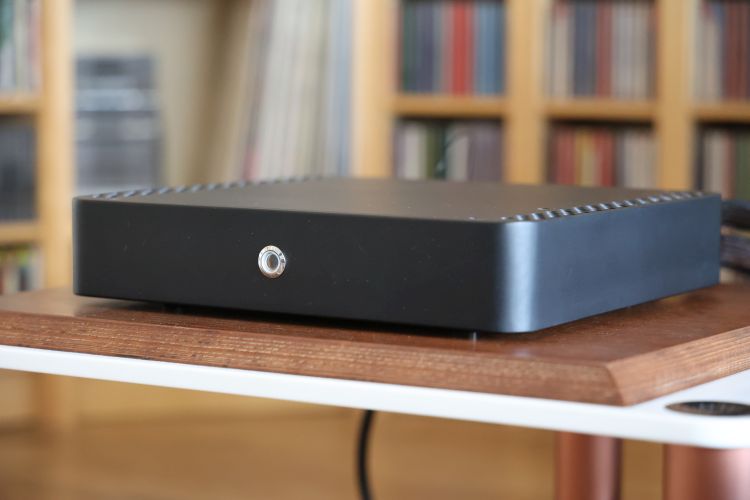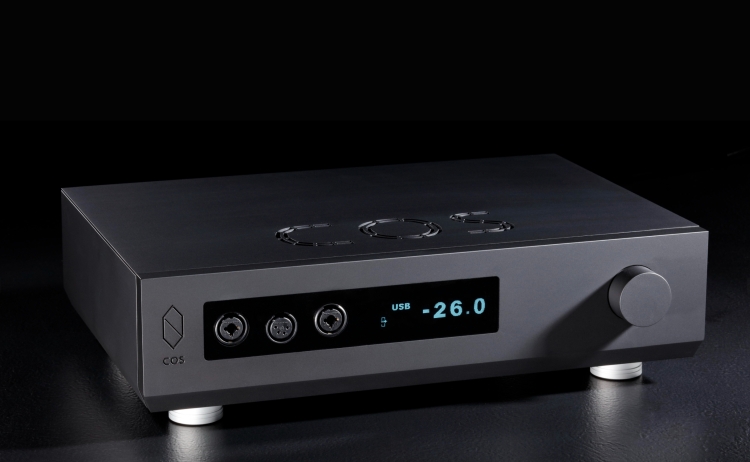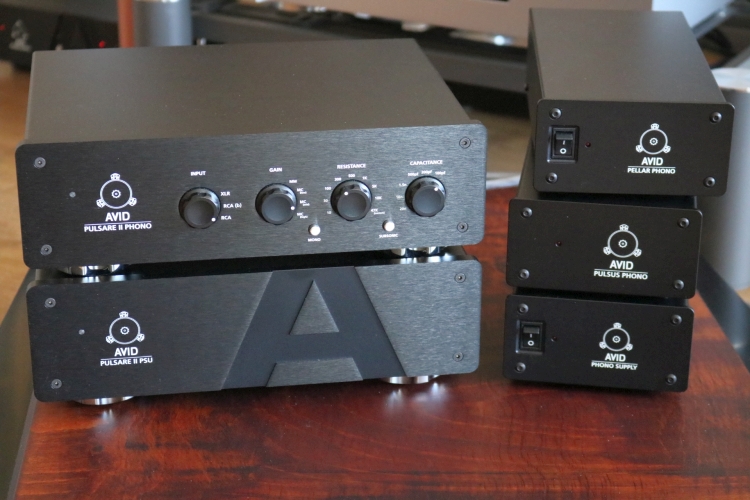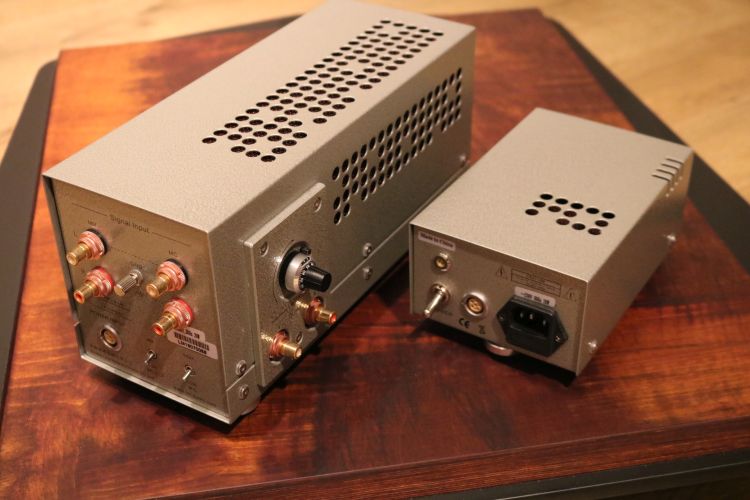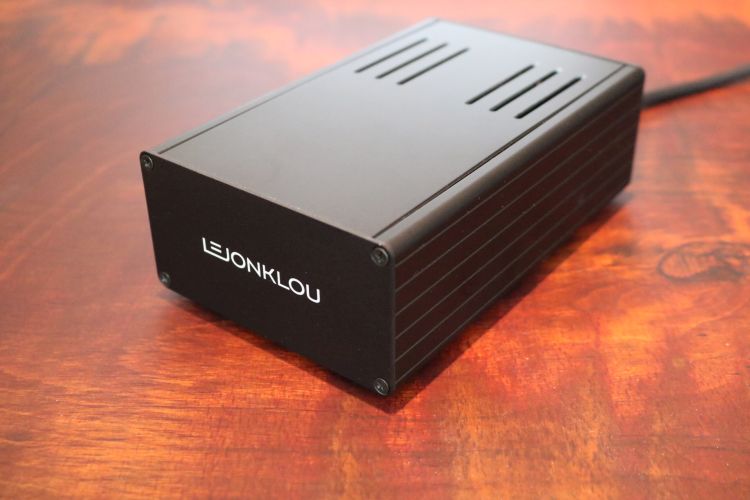
Review sample supplied by hexagonaudio
Retail price in the NL (incl 21% VAT): 1800 euro
From earlier experiences with Lejonklou products, I know that Fredrik Lejonklou does not rest before he has found the ideal combination of electronic components to achieve a delivery that he finds both captivating and emotionally appealing. In this light, the brand-new Entity MC phono stage is pretty special as it is directly derived from the costly, built-to-order SINGularity double mono MC phono stage. There is a nice text by Fredrik on the Lejonklou website that perfectly describes the process which I will shamelessly copy and reprint below, just shortened a little.
Back story
It all started in 2011 when an idea about an ultra-linear and very high gain input stage took shape in my head. The first prototype was built the same year and sounded very promising, but tuning it to absolute stability was difficult. In retrospect, I realized I didn’t know enough about high-frequency tuning, and the components weren’t measured and selected to the required precision.
Five years later I had finally tamed the input circuit. The project now showed such promise that I went crazy and set my goal to perfection. With the help of measuring and selecting every component involved into groups with extremely small tolerances, machining the cases out of solid annealed billets of pure copper, dividing the stereo circuit into two completely isolated channels, designing a whole new power filter section and dual-stage regulation, and spending month after month of listening through every combination of the narrowly spaced component values, I finally arrived at SINGularity. This built-to-order product was first shown to the public in April 2019.
The entity uses the same input circuit, phono equalization, output stage, and power regulation as SINGularity. What has changed is the case (instead of the extremely expensive copper case it’s now simple, functional, and inexpensive), the power supplies (instead of two switch-mode power supplies with massive filtering it’s now equipped with the same copper screened linear power supply that I use in Slipsik 7) and the channel separation (instead of two completely isolated Mono channels, it’s now a dual mono design in a single case with a shared power supply).
I did try to cut things down further; I had the idea of making Entity out of a cheaper selection of components to keep the price as low as possible. But this turned out to be a blind alley. I was never 100% engaged by the music that this version presented. When I finally gave in and built Entity with the exact same circuit as SINGularity, the result was a revelation like hitting the bullseye.
So I kept the two diamonds (my excessively selected and tuned MC phono circuits) and put them in a shoebox. Be prepared for a wild rollercoaster ride through your record collection.
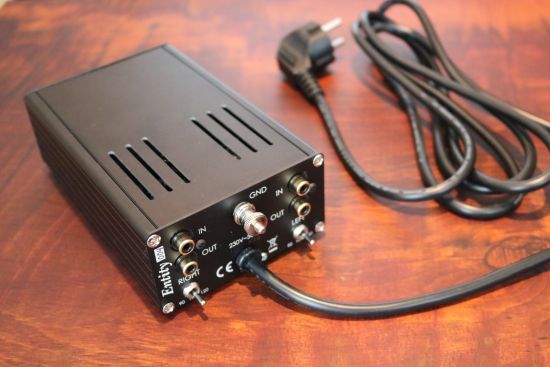
Functionality
There’s very little to say about the Entity’s functionality and while I am fond of devices that offer many user-selectable functions, for many music lovers simpler will be better. Naturally, the Entity is not simple for simplicity’s sake. Rather, it is the result of leaving out anything that does not contribute to a better sound. The Entity has a captive power cable, offers a single set of inputs and outputs, and has a switch to select the load at 90, 120, and 180 Ohms. There is nothing else to configure and as it uses less than 5 Watts, it can be left switched on indefinitely. The input sensitivity is specified at 0.4mV with 71dB gain and the output impedance is 300 Ohms.
Even though the power cable is captive, the manual specifies that it must be used in a certain orientation to achieve the weakest electrical field around the power supply, improving the sound. Naturally, I used it that way.
System context
The Entity will be assessed using the resident Origin Live Calypso Mk4 turntable with a Vira Aidas Rainbow MC cartridge in its Illustrious arm. The LP-33’s output was initially sent to the Ayon Stealth tube preamp (which is how I normally play records) and later also to the Lejonklou Sagatun double mono preamp. Also used in the second instance is the Holbo Airbearing turntable with Acoustical Systems Aiwon and Palladian cartridges (review in the making). The Holbo’s platter and tonearm are both air-bearing designs. Another phono stage that is set up for review and is available for cross-comparisons is the Line Magnetic LM-33 and as an absolute reference, there is the resident CH Precision P1 reference phono stage. The power amp used is the CH Precision A1.5 and the speakers that I used are the Martin Logan ESL15A’s. The interlinks that I used with the Entity initially were the AudioQuest Water but and while that works very well, an even better result was obtained by using the Vermouth Reference interlinks.
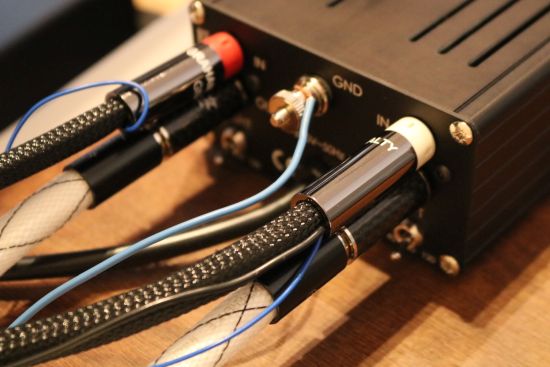
The normal load that I use with the Vira Aidas cartridge and the CH Precision P1 phono stage is 250-305 ohms depending on my mood and the music that is played. Although the values available on the Entity are much lower than I am used to, the cartridge worked very well even with these low settings. I settled on the middle setting of 120 Ohms.
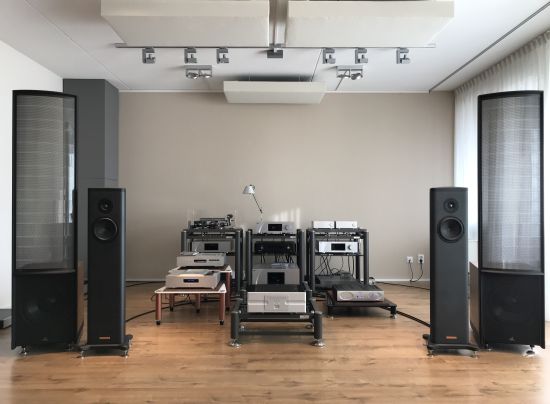
Listening
My first listening to the Entity revealed that it is very much cut from the same cloth as the other Lejonklou components that I reviewed. Even in comparison with my reference CH Precision P1 phono preamp, the Entity sounds remarkably transparent, pretty much just as airy and refined, and every bit as fluid. And irrespective of its huge transparency, the Entity absolutely does not add any hardness or edge nor the slightest amount of grain. This should not be underestimated as I have heard plenty of phono stages that do not achieve this level of nuance and freedom from hardness or edge even at a much higher cost.
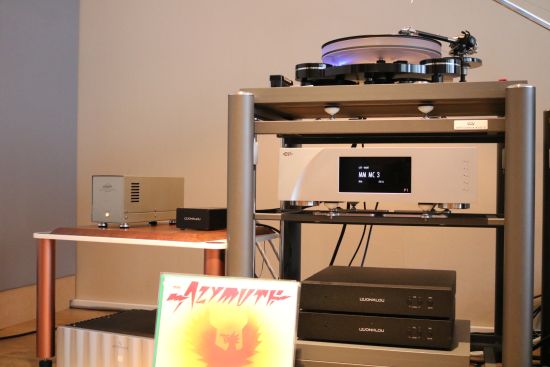
I found that the Entity sounds much better on the Artesania Modular rack than on the floor. Although that sounds logical, many people might treat it as a power supply brick and think it would be fine on the floor. While it sounds very good even on the floor, it only comes to life on a good rack such as the Artesania. Other racks will no doubt also work well to a varying degree but this is what I have available. The placement on the rack adds a more solid bass, whereas it was full but lacking in punch and drive when on the floor, more acoustically credible timbre, and an overall more energetic sound.
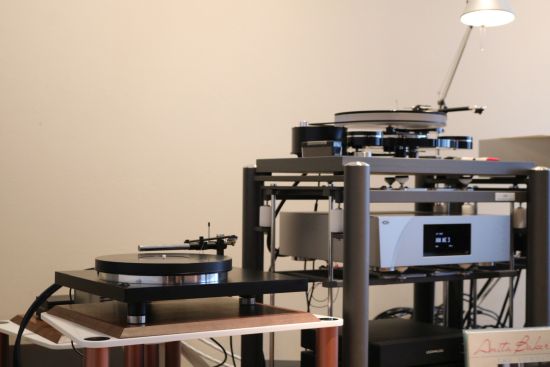
Fitted with the Acoustical Systems Aiwon, the Holbo turntable sounds even more articulate, linear, and transparent but also less organic, free-flowing, and 3D than the Origin Live. These differences were first observed using the CH P1 and, as was quickly evident, the Lejonklou laid them out just as clearly as did the P1. Its transparency truly is first-class.
In comparing the Lejonklou Entity with the Line Magnetic LP-33 that is also set up for review, the bass is tighter, and especially the midrange is more linear and transparent as well as better-textured. Some subtleties that are glossed over with the LP-33 are now more clearly distinguished. While this can lead to a cool or overly clean sound with many transistor designs, the Lejonklou remains sweet, utterly fluid, and seductive. The latter is an important factor for all Lejonklou designs, or, at least I think it is. It seems that the brand will not issue anything that sounds overly controlled. From aural memory, the Entity’s resolution is pretty much on the same level as I remember the Jeff Rowland Cadence to be, and as good as I’ve heard it from any recent phono preamp that I used except for the CH Precision P1. It may have been some time ago but I strongly feel that not even the Pass Labs XP17 presented this amount of transparency and fluid refinement.
The Lejonklou has a convincingly natural timbre with no synthetic nature but it’s not quite as texturally rich or timbrally convincing as the Pass or the CH P1. The LM-33, even if it is quite euphoric and not nearly as linear and transparent as the Entity, also has the capacity to slightly better flesh out wood and string instruments whereas the Lejonklou is just a little flatter and less “technicolor” than these other phono stages.
But all these comparisons are pretty relative because the Line Magnetic is a tube preamp, the Pass costs 5000 euros and the CH Precision is stratospherically priced. Between the Line Magnetic and the Lejonklou, we have two entirely opposing presentations that make this very much a matter of taste, not of quality. Tube aficionados who crave that lush euphoric delivery that only tubes provide and want the maximum amount of “soul” will no doubt opt for the LM and I fully understand that. The Lejonklou may not be tube-like rich, but it certainly is not cool. In fact, I don’t feel at all that the Lejonklou is in any way transistor-y or electronic-sounding.
Conclusion
Since I am used to listening to LPs played back via solid-state equipment (Jeff Rowland, Pass Labs, and more recently CH Precision) the Lejonklou suits me perfectly. The Entity has clearly been tweaked so carefully that it simply has no sins of commission. While it is even-handed and superimposes no character of its own it is also highly rhythmic, expressive, and articulate. Add to that its immense transparency and its free-flowing and highly refined delivery on a level that I have so far only heard from the Jeff Rowland Cadence and the CH Precision P1 and this starts to look like something of a bargain. The Entity may well be the phono stage to beat in its price range.
Postscript June 2021
The Entity has been updated to 1.1 version. Having heard the new model in comparison with a couple of other preamps but not its predecessor, I was impressed to find it still has superlative transparency, low-level detailing, treble air, and refinement but now coupled with massively improved solidity, robustness, and dynamic slam. In its latest guise priced at 1.875 euros, it comes highly recommended.

(Entity MC 1.1)
More Lejonklou
External Links
Distributor for the Benelux, UK, and Germany: hexagonaudio
Manufacturer’s website: Lejonklou
